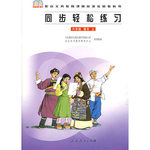题目内容
38. Donkeys and camels are still widely used in some parts of the world _____ of burden.
A.for animals B. as animals C. as beasts D. instead of beats
C

 同步轻松练习系列答案
同步轻松练习系列答案 课课通课程标准思维方法与能力训练系列答案
课课通课程标准思维方法与能力训练系列答案The Donkey Mobile Library
It is a bright morning in the Ethiopian countryside. Yohannes walks beside a pair of donkeys that are pulling a two-wheeled cart. They arrive at the agricultural town of Awassa where Yohannes opens the sides of the cart to display, not the usual vegetables or tools, but children’s books. This is the Donkey Mobile Library, the first of its kind in Ethiopia and one of only a few in the world.
Yohannes was born in Ethiopia, North Africa, but trained to be a librarian in the USA and returned to Ethiopia years ago. The cart is full of picture books donated by American libraries, teachers and school children.
Yohannes arranges small painted benches in the shade of the trees, and suddenly Ethiopian children come shouting and racing down every road and path. It’s mobile library day! They circle the bookshelves with great excitement. Until the Donkey Mobile Library began its regular two-monthly visits, many of these children had never seen a book.
“Without books, education is very dull, like food without salt. You can survive but you can’t really come alive,” says Yohannes. “The ability to read is the basis for greater productivity, better health and longer life. Even though the children lack material goods, with books they can imagine a world of possibilities.”
Yohannes first worked in the children’s section of the main library in America. Surrounded by books he had never seen before, he realized how joyful and imaginative children’s literature is. He says, “I always thought of Ethiopia. But how could I bring children’s books to my home country when it had almost no libraries to keep the books in?”
He contacted Jane Kurtz, a writer born in America but brought up in Ethiopia, and together they created the Donkey Mobile Library. The children say that the Library has given them ideas about what they might do in the future. A child called Dareje wants to be a scientist and find a cure for life-threatening diseases. An eleven year-old girl, Fikerte, wants to do research about the moon and discover new facts about outer space. Tamrat, aged 10, comes every time.
“What brings you back here time and time again?” the librarian asks him.
“The stories,” Tamrat replies instantly.
【小题1】How do the children feel when they see the Donkey Mobile Library?
| A.Excited. | B.Surprised. | C.Interested. | D.Curious |
| A.Ethiopian children have no idea about their future |
| B.Yohannes and Kurtz share similar life experiences |
| C.most books in the Donkey Mobile Library were bought in America |
| D.donkey carts in Awassa usually carry vegetables and tools |
| A.visits the countryside every day | B.was created by Yohannes himself |
| C.benefits Ethiopian children a lot | D.was the first of its kind in the world |
| A.A book review.. | B.A news report | C.A historical story. | D.An advertisement. |
The deserts of the world are not all covered with sand. Many of them have surfaces of rock or clay or small stones. They are not flat, either. They often have high hills and deep valleys. There is some plants’ life in many parts of the desert. There is little rain in the desert, but it does fall often enough for most plants.
The deserts of the world are not uninhabited (not lived by people). People also live outside oases(绿洲), but these people are not farmers. They have camels, goats, donkeys, sheep, etc. These animals can live on the desert plants and do not need much water.
The people of the desert have to move constantly from place to place, they must always look for grass or desert plants for their animals. They usually live in tents. When there is no more food for their animals, they fold up their tents, pat them on their camels and donkeys, and move to another place. In good years, when there is enough food for their animals, they trade their skins and their goats and camel hairs with the people of oases for wheat and fruit. But in bad years, when there is not enough food for their animals, the people of the desert would attack the oases people. But they are also hospitable, no man in the desert would ever refuse to give a stranger food and water.
1.The underlined word “hospitable” has the meaning of being _______.
|
A.brave |
B.cruel |
C.strange |
D.kind |
2.In the desert _______.
|
A.it rains in spring only |
|
B.it rains for a short time every month |
|
C.there is some rain, but far from enough |
|
D.the rainfall is just enough for the plants |
3.People live _______.
|
A.only inside the oases |
|
B.only outside the oases |
|
C.both inside and outside the oases |
|
D.in places with regular rainfalls |
